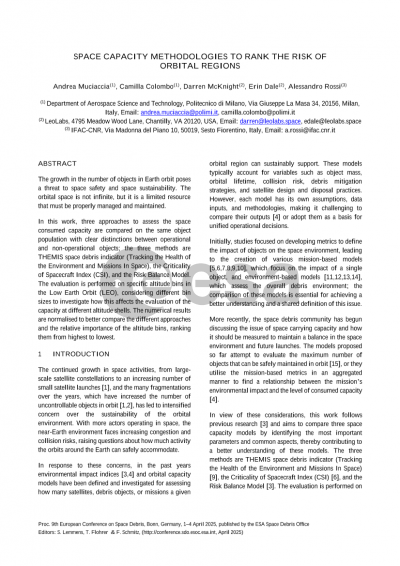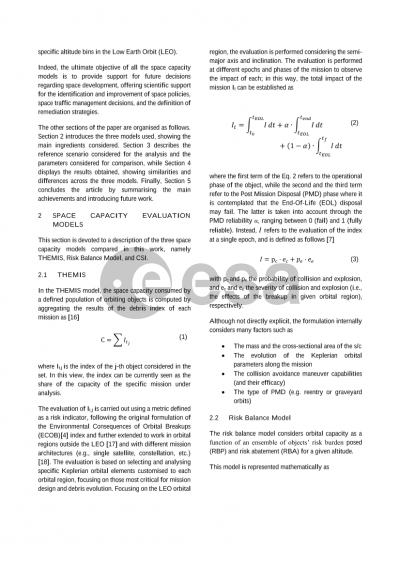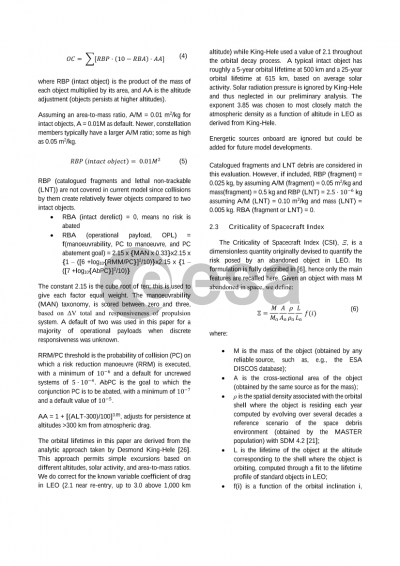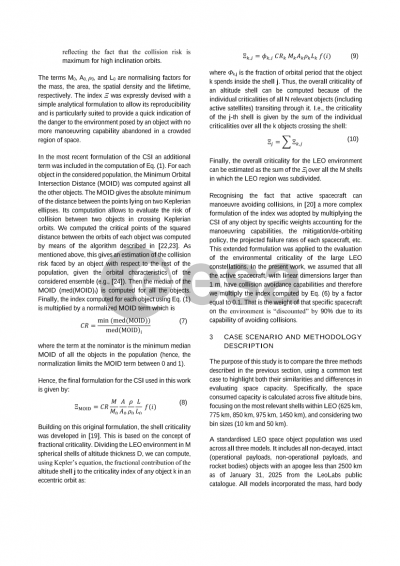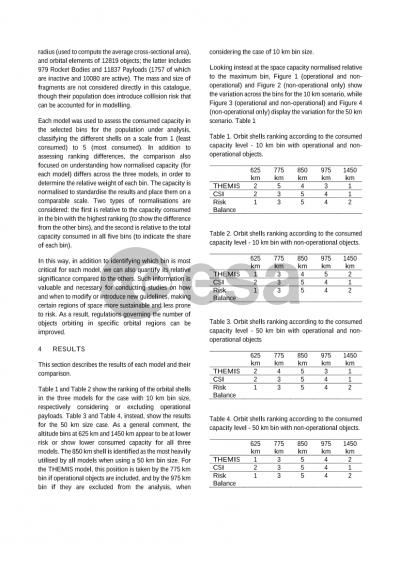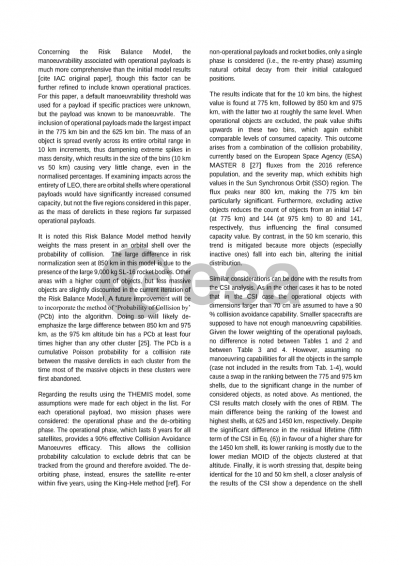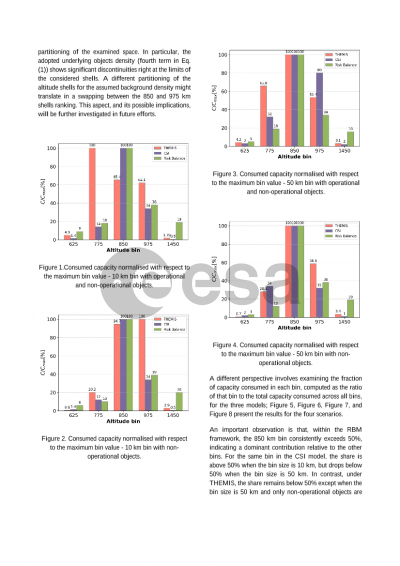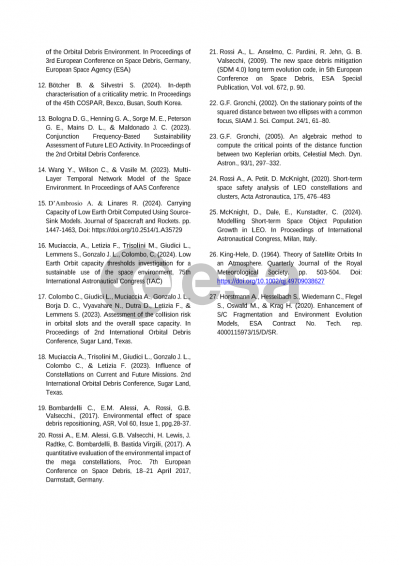Document details

Abstract
The growth in the number of objects in Earth orbit is posing a threat to space safety and space sustainability. The launch of many new large constellations, along with the generation of small space debris fragments because of breakup events, is challenging the safe management of space system operations. Indeed, the orbital space is not infinite, but it is a limited resource that thus must be properly managed and maintained. Nowadays, space sustainability is a worldwide recognised issue, leading to the study of different solutions to have a sustainable evolution of the space environment. Amongst these solutions, many formulations assess the impact of a mission on the space environment and define the capacity of specific orbital regions and its consumption.
Within this context, three methods are considered and compared in this work. The first approach is the THEMIS (Tracking the Health of the Environment and Missions In Space) approach, where a risk-based model is considered to assess the impact of a single mission in terms of the increase in the operational burden in term of collision avoidance manoeuvres for other active spacecraft and, based on that, the consumed orbital capacity is defined by aggregating the results of the single missions over a global object population. The second approach is the Criticality of Spacecraft Index (CSI), where a dimensionless metric is considered a function of operational orbit and objects' characteristics (such as the mass and the area) to assess the impact of a mission and the orbital capacity is evaluated by aggregating the results in terms of impact of all the objects considered. The third approach examined is the Risk Balance Model, which considers risks posed normalised by risk abated and altitude of objects, incorporating the ability of an object to manage its collision risk with the rest of the space object population, and the foundational concerns of direct effects on operational satellites (i.e., immediate risk) and orbital persistence (i.e., long-term risk).
In this work, the three approaches are compared on the same object population with clear distinctions between operational and non-operational objects. The evaluation of the consumed orbital capacity is performed through a parametric analysis, considering a grid in terms of orbit altitude and inclination in low Earth orbit (LEO) and investigating the importance of some object parameters such as size, mass, manoeuvrability, collision risk management protocols, etc. The LEO grid is not fixed in terms of size, but different altitude bin sizes are considered to understand how this affects the evaluation of the capacity in different altitude shells. In addition, the numerical results are normalised to better compare the different approaches and the relative importance of the different altitude bins. Through this analysis, different regions are sorted in terms of their risk to orbit as a tool for space operators to assess the viability of different orbital regions for missions.
Preview
